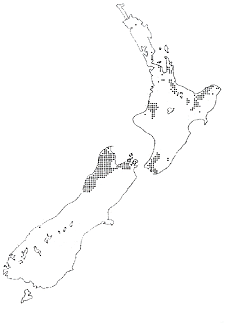Hard Beech Nothofagus truncata

Product qualities
Hard beech is the densest of the New Zealand beech species, similar to North American hard maple and with much the same properties.
Hard beech heartwood is honey to brown in colour, sometimes varying from light to medium brown in one piece adding interest to the timber. Sapwood is a slightly lighter tone. The grain is straight with a fine and even texture. Lustre is slightly less apparent than other Southern beech species.
Uses and applications
Furniture, joinery, flooring and decking.
Physical and mechanical properties
Hard beech has excellent strength properties and hardness with exceptional dimensional stability.
The fine and even texture allows for uniform wearing.
Moderately easy to split. Nailing is satisfactory but requires care.
Sawing, sanding, machining, finishing and turning properties are all excellent. However there is a relatively high silica content that can cause blunting of conventional saws and cutters. This may be overcome by the use of specially hardened cutting edges.
Minimal sanding is required after machining to achieve a smooth high quality finish.
Hard beech glues, stains and paints well.
Its steam bending properties are excellent.
Moderately easy to split. Satisfactory nailing with care.
The wood is slow drying and tension wood may be present.
Galvanised fixings are recommended for exterior uses because unprotected iron nails stain the timber. Alternatives include stainless steel, silicon bronze or copper.
The product has no odor.
Availability
May be available in the marketplace
Natural Durability
Hard beech heartwood is durable and can be used in exterior exposed situations. It is suitable for outdoor decking and achieves Hazard Class H3.2 durability. Pathological heartwood is non-durable. Hard beech sapwood is suitable for internal end-uses and is resistant to anobium and lyctus borers.
Disclaimer: While every effort is made to ensure the accuracy of the information provided on this site, Farm Forestry Timbers Society do not accept liability for any consequences arising from reliance on the information published. If readers have any doubts about acting on any articles they should seek confirming, professional advice.
 Farm Forestry New Zealand
Farm Forestry New Zealand Farm Forestry Timbers - Headlines
Farm Forestry Timbers - Headlines